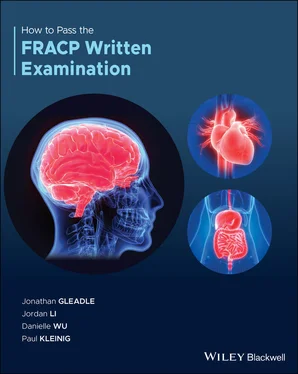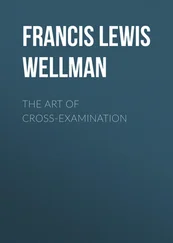36 36. A 55‐year‐man presents with a 2‐hour history of palpitations and chest discomfort. He had a similar episode one year ago. He is known to have ankylosing spondylitis, diet‐controlled type 2 diabetes, and asthma. He uses a salbutamol inhaler two to three times a week. On examination, he is alert and orientated, BP is 110/60 mmHg, pulse rate is 150 bpm, SaO2 on room air is 95%. There is scattered expiratory wheeze. There is no heart murmur. His current ECG is shown in Figure 1.1A, while Figure 1.1Bshows an ECG taken 1‐year ago during an infective exacerbation of asthma. His biochemistry results and troponin T are within normal reference range. Figure 1.1A Figure 1.1B The most appropriate treatment for rate control is:Intravenous adenosine.Intravenous digoxin.Intravenous flecainide.Intravenous verapamil.
QUESTIONS (37–43) REFER TO THE FOLLOWING INFORMATION
Match the following blood pressure lowering agents to their mechanism of action.
1 Decreased renin secretion and decreased heart rate.
2 Decreased central synthesis of catecholamines.
3 Decreasing degradation of circulating natriuretic peptides.
4 Relaxation of smooth muscle through opening KATP channels.
5 Blocking the angiotensin I binding site on angiotensin converting enzyme (ACE).
6 Interfering with Ca2+ release on the sarcoplasmic reticulum.
7 Increased guanylyl cyclase activity.
1 37. Minoxidil
2 38. Sacubitril
3 39. Moxonidine
4 40. Captopril
5 41. Glyceryl trinitrate
6 42. Nebivolol
7 43. Hydralazine.
QUESTIONS (44–51) REFER TO THE FOLLOWING INFORMATION
Match the clinical features listed below to the most likely type of congenital heart disease or clinical syndrome found in patients.
1 Atrial septal defect (ASD).
2 Ventricular septal defect (VSD).
3 Patent ductus arteriosus (PDA).
4 Coarctation of the aorta (CoA).
5 Eisenmenger's syndrome.
6 Marfan's syndrome.
7 Tetralogy of Fallot.
8 Transposition of the great arteries.
44.Cyanosis, clubbing, polycythaemia, an elevated JVP with a dominant a wave pattern, right ventricular heave, palpable pulmonary component of the second heart sound (P2), loud P2, fourth heart sound, pulmonary ejection click, and pulmonary regurgitation on auscultation.
45.Cyanosis, clubbing, polycythaemia, right ventricular heave, a thrill at the left sternal edge, a single second heart sound (A2) and short pulmonary ejection murmur on auscultation, a boot shape heart, right ventricular enlargement, and decreased vascularity of lung vessels on CXR.
46.A better developed upper body in comparison with the lower limbs, radiofemoral delay, and hypertension in the upper limbs only, midsystolic murmur over the precordium and back, hypertensive changes in the fundi, a small aortic knuckle and rib notching on CXR.
47.Fixed splitting of the second heart sound (S2), pulmonary systolic ejection murmur (increasing on inspiration), signs of pulmonary hypertension.
48.A thrill and a harsh pansystolic murmur to the left sternal edge, mitral regurgitation.
49.Arachnodactyly, joint hypermobility, long, thin limbs, a long and narrow face, lens dislocation, blue sclerae, a high‐arched palate, pectus excavatum, aortic regurgitation, mitral valve prolapse, kyphoscoliosis, and arm span exceeding overall height.
50.A continuous murmur along the left sternal border, ECG shows left ventricular hypertrophy, CXR shows increased pulmonary vasculature.
1. Answer: C
An aneurysm is an artery that has enlarged to greater than 1.5 times the expected diameter. In the infrarenal aorta, the threshold diameter is accepted as 3.0 cm. Abdominal aortic aneurysm (AAA) affects approximately 4–7% of men and 1–2% of women over the age of 65 years.
Medical therapy options remain limited and no aneurysm‐specific pharmacotherapy is currently available. Medical management of AAA generally involves cardiovascular risk reduction, including antiplatelet, statin, and antihypertensive therapy. The best medical management is generally not intended to limit expansion or reduce the size of the AAA. However, managing cardiovascular risk factors is crucial for improving the overall survival of patients and the outcomes of future AAA repair.
Australian national driving regulations stipulate that untreated atherosclerotic aortic aneurysms >5.5 cm disqualify patients from an unconditional driver's licence, except with the approval of a treating vascular surgeon.
Patients with large aneurysms (men >5.5 cm; women >5.0 cm) should be considered for elective aneurysm repair. The optimal management of small AAAs (4.0–5.5 cm) has been clarified by several large, randomised control trials which demonstrate no long‐term survival benefit with open or endovascular repair.
Most AAAs detected with screening or as an incidental finding are below the threshold for elective repair. The risk of AAA rupture increases with AAA diameter ( Table 1.1). The surveillance interval for asymptomatic AAA also depends on AAA diameter ( Table 1.2).
Table 1.1 Annual AAA rupture risk by diameter.
| AAA diameter (cm) |
Rupture risk (%/year) |
| 3.0–3.9 |
0% |
| 4.0–4.9 |
1% |
| 5.0–5.9 |
1–10% |
| 6.0–6.9 |
10–22% |
| >7.0 |
30–50% |
Source: Based on Chuen J. Abdominal aortic aneurysm: An update AJGP 2018;47:252–56
Table 1.2 AAA surveillance intervals by diameter.
| AAA diameter (cm) |
Surveillance interval (months) |
| 3.0–3.9 |
24 |
| 4.0–4.5 |
12 |
| 4.6–5.0 |
6 |
| >5.0 |
3 |

Chuen J. Abdominal aortic aneurysm: An update AJGP 2018;47:252–56.
https://www1.racgp.org.au/ajgp/2018/may/aaa‐an‐update/
2. Answer: B
The ECG shows Atrial Fibrillation (AF) with a rapid ventricular response. A fourth heart sound (S4) is a late diastolic sound due to a high pressure atrial wave reflected back from a poorly compliant ventricle. It does not occur in patients with AF because S4 depends on effective atrial contraction. In patients with an atrial septal defect, there is fixed splitting of the second heart sound because there is equalisation of volume loads between the two atria occurring through the defect. A loud S1 can occur in AF due to reduced diastolic filling time so the mitral valve remains widely open at the end of diastole. S3 is a mid‐diastolic sound. It can occur in children and young people due to rapid diastolic filling. A pathologic S3 is present in patient with congestive heart failure (CCF) and other heart disorders due to reduced ventricular compliance and rapid diastolic filling.

Voin V, Oskouian R, Loukas M, Tubbs R. Auscultation of the heart. Clinical Anatomy. 2016;30(1):58–60.
https://www.ncbi.nlm.nih.gov/pubmed/27576554
3. Answer: B
Anthracyclines such as doxorubicin and idarubicin exhibit an anti‐cancer action through inhibition of topoisomerase (Top) 2α in cancer cells, and their toxicity is largely through inhibition of Top 2β in cardiac myocytes. Topoisomerases are highly expressed in proliferating eukaryotic cells and are involved in detangling and relegating aberrant DNA coils. By binding Top 2α in cancer cells' DNA, anthracyclines facilitate the cleavage function of topoisomerase, but not the religation, which leads to accumulation of double stranded DNA breaks and initiates programmed cell death pathways. Anthracyclines also cause mitochondrial dysfunction and excessive intracellular reactive oxygen species, which results in increased apoptosis. This process is promoted by high intracellular iron availability. Both of these pathways are thought to contribute to the death of cardiac myocytes, and result in cardiomyopathy.
Читать дальше














